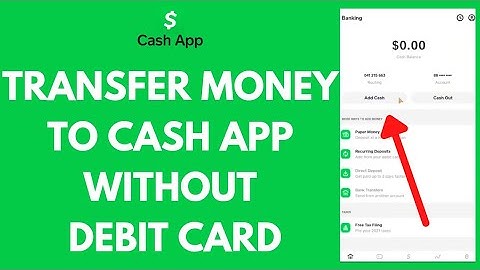Editorial Note: We earn a commission from partner links on Forbes Advisor. Commissions do not affect our editors' opinions or evaluations. Show
Balance transfers can help cardholders receive lower or 0% interest rates on existing balances or consolidate multiple balances into one. Existing credit card balances or personal, auto or student loans may also be eligible for balance transfers. Current Capital One cardholders can request a balance transfer via their online account. Prospective cardholders can apply for a new Capital One card offering a 0% introductory APR period to be followed by the card’s standard rate APR. Featured Partner Offer Capital One Quicksilver Cash Rewards Credit CardUp to 5% Cash Back Earn unlimited 1.5% cash back on every purchase, every day. Earn 5% cash back on hotels and rental cars bookedRead More Regular APR17.99% - 27.99% (Variable) Credit ScoreExcellent, Good (700 - 749) Editorial Review This card is a good value all-rounder, offering an intro APR period, no annual fee and a simple 1.5% unlimited cashback rate on all purchases. Pros & Cons
Card Details
How To Do a Balance Transfer With Capital OneCapital One allows balance transfers on both new or existing cards. Keep in mind the total amount of the transfer (including fees) cannot exceed the credit limit of the card. This means if you have a $10,000 credit limit and a 3% balance transfer fee, you can only transfer $9,700. Balance transfers are not eligible for rewards and can take three to 14 days to complete depending on whether it’s an online or mailed-in request. Use an Existing Capital One CardCapital One cardholders can transfer a balance to an existing account from a non-Capital One credit card or loan. Log into your online account to see if you’re eligible. Cardholders should have some information ready before making a request, like the amount they wish to transfer and the name, account number (i.e., credit card number) and payment address of the other card issuer. Capital One may approve a request immediately, or it may take a few days for them to come back with a decision. Apply For a New Capital One CardCapital One offers a few 0% introductory APR offers specifically for balance transfers. Fees may still apply, which cardholders should consider when determining whether a balance transfer is worth it. Applicants with excellent credit are more likely to qualify for the best balance transfer cards that Capital One offers. Applying for a new credit card almost always results in a hard inquiry into the applicant’s credit report. Expect a short-term drop in your credit score following a hard inquiry. Try submitting a pre-approval application to see if you qualify for the Capital One card that interests you. Capital One VentureOneThe Capital One VentureOne Rewards Credit Card offers a 0% intro APR on purchases and balance transfers for 15 months; 17.99% - 27.99% variable APR after that; 3% fee on the amounts transferred within the first 15 months. There is a 3% fee on every amount transferred. Other perks include:
Capital One QuicksilverThe Capital One Quicksilver Cash Rewards Credit Card offers a 0% intro APR on purchases and balance transfers for 15 months; 17.99%-27.99% variable APR after that; 3% fee on the amounts transferred within the first 15 months. Cardholders must pay a 3% fee on every amount transferred. Other perks include:
Capital One SavorOneThe Capital One SavorOne Cash Rewards Credit Card offers a 0% intro APR on purchases and balance transfers for 15 months; 17.99% - 27.99% variable APR after that; 3% fee on the amounts transferred within the first 15 months. Cardholders must pay a 3% fee on any balance transferred. Other perks include:
What To Do After Requesting a Balance TransferIf a balance transfer is approved, the transfer will begin immediately. It can take up to 10 business days until the other card issuer or loan provider processes and receives the information. Online transfers are typically the quickest, while receiving balance transfer checks in the mail may take longer. Check the old account regularly and keep making payments until the transfer is complete (when you see a zero balance). Ensure the entire approved amount is transferred to your Capital One card. Cardholders can check the status of a transfer on Capital One’s website. Cardholders can decide what to do with old accounts once transfers are complete. Even if a credit account is inactive, it could benefit credit scores by lengthening credit history and decreasing credit utilization—both crucial factors credit bureaus consider when rating credit scores. Best Practices for Balance TransfersWhile balance transfers can be useful for paying down debt or taking advantage of lower interest rates, cardholders should be vigilant before committing to transfers. Find the Best CardThe best cards offer a 0% introductory APR for 12 to 24 months, allowing people in debt to take advantage of no interest payments while paying down a big balance. Capital One has several lucrative offers including the ones on the Capital One VentureOne Rewards Credit Card and the Capital One Quicksilver Cash Rewards Credit Card cards. Calculate Monthly PaymentsBefore biting the bullet and applying for a new card with no interest, figure out how much each monthly payment should be to pay down the balance completely. Divide the total balance by the number of months offered with no interest to find the optimal amount. (Minimum monthly payments assigned by the card issuer are often not enough to pay down a balance.) If the ideal monthly payment is affordable, transferring a balance to a new card may be worth it. If it’s not reasonable, consider other options like a personal loan or negotiating with the existing card issuer. Find an Offer With No Balance Transfer FeeAlthough uncommon, some credit cards offer balance transfers with no fee. Fees are usually a small percentage of the balance transfer amount, which can add up to hundreds of dollars depending on the size of the transfer. The best balance transfer cards offer 0% introductory APR for a set period and do not charge a transfer fee. Cardholders could save money in the long run with this kind of offer, but likely need an exceptionally high credit score to qualify. Try filling out a pre-approval application first. Read the Terms and ConditionsWhen applying for a new credit card, applicants should read the card terms carefully, no matter the situation. Terms may be messy and hard to understand. If you are still unclear, call the card issuer directly to ask questions until you are completely sure what you are getting into. Consider the following before applying for a new credit card with a balance transfer offer:
Find The Best Capital One Credit Cards Of 2022Bottom LineCapital One offers enticing balance transfer cards with 0% introductory APRs. Consider the options carefully and take advantage of Capital One’s pre-approval application before committing. Remember new purchases may still accrue interest even if the balance transfer does not. Make sure you can pay off the entire balance before the introductory period ends. Contact the card issuer with any specific questions to understand the card agreement when in doubt. Can I transfer money from my Capital One credit card to a bank account?Capital One does not allow money transfers between their credit cards and their debit cards. In essence, you can only transfer money to your 360 checking account by linking it to another checking or savings account. Even if you could do the transfer, it wouldn't be a good idea.
Can I transfer a credit card credit to my bank account?You can't transfer a credit card balance to a bank account because the balance on your credit card is a debt. If you want to transfer your credit card balance to another credit card, however, you can do that with a balance transfer.
Can I transfer money from my credit card to another account?There are various ways to transfer money from your credit card to your bank account. You can transfer directly to the bank through net banking, money transfer credit card, or phone call. Else, you can indirectly transfer money using an e-wallet that is linked to your bank account.
|

Related Posts
Advertising
LATEST NEWS
Advertising
Populer
Advertising
About

Copyright © 2024 membukakan Inc.


















